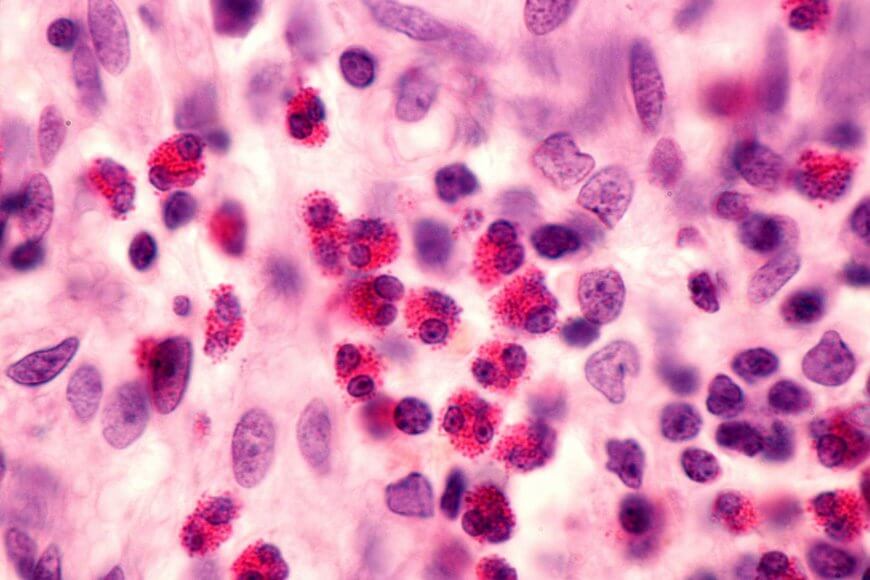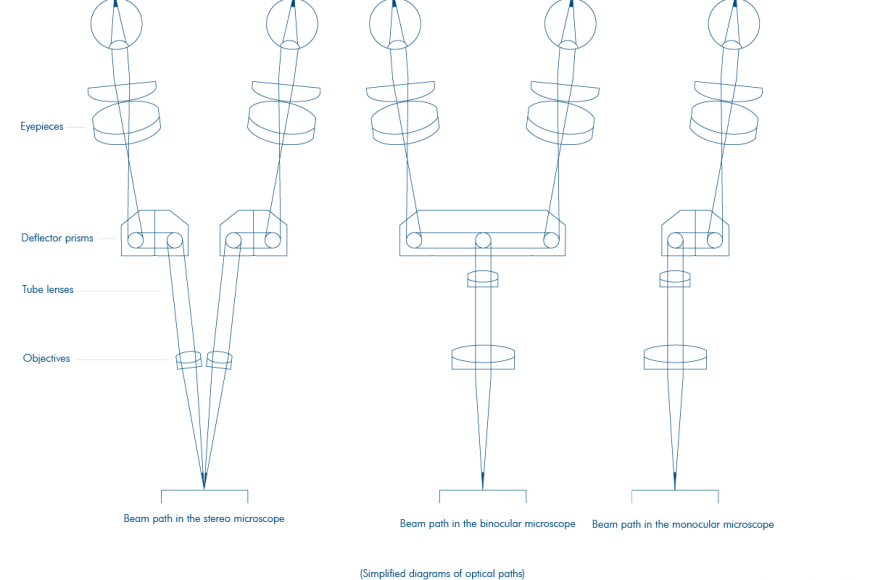Prime Scientific - How Does a Microscope Work?
The microscope is one of the most common laboratory devices. However, few people are actually aware how it works.

Composite light
microscopes consist of two lens systems: one eyepiece toward the eye and one
toward the object-side objective. The objectives are the most important and
valuable part of the microscope, because their quality is critical for
determining the overall performance of the microscope.
Achromatic objectives
consist of compound lenses made of different materials. This makes it possible
to correct longitudinal chromatic aberration for two colours, i.e. the varying
focal points of several different wavelengths. Apochromatic objectives are
corrected for three colours and the deviation of the image location for the
intermediate colours is very small. Objectives that are used to correct the
curvature of the image field are referred to as plane objectives.
The Eyepiece and Categories
The eyepiece acts as a
magnifying glass and magnifies the intermediate image of the objective.
Wide-field eyepieces have a larger field-of-vision number than normal
eyepieces. The field-of-vision number is the diameter of the object field in mm
multiplied by the magnification factor of the objective: an eyepiece with a
field-of-vision of 18 mm with a 4x objective yields an object field with 4.5
mm. Plane eyepieces smooth out the image field similar to the plane objectives.
Modern light microscopes
are basically categorised as monocular, binocular or stereo
microscopesdepending on the number of eyepieces and objectives.
Monocular microscopes
have one eyepiece and one objective and are the most simple type of
microscopes.
Binocular microscopes
have two eyepieces and one objective. They provide for fatigue-free working as
microscopes with one eyepiece. However, they do not allow for three-dimensional
viewing of the object.
Stereo microscopes have
two eyepieces and two objectives, which can, however, be combined to form a
main objective and thus project a separate image of the object in each eye.
This allows objects to be viewed three dimensionally.

In biology and medicine,
the object is usually illuminated with transmitted light before the light
passes through the objective. This is referred to as transmitted light
microscopy. In incident light microscopy, the light is cast from above onto the
object and is reflected back into the objective. Incident light microscopy is
used for the microscopic examination of opaque objects.
The Köhler illumination
makes it possible to illuminate precisely the object area that can be overlooked.
This prevents unnecessary stray light from illuminated parts of the object that
are not in the field of view.
Dark-field Microscopy
Dark-field microscopy is
used to examine objects that are particularly lacking in contrast such as
micro-organisms or red blood cells. The dark-field feature directs the light at
an oblique angle through the object, past the objective.
The light that is refracted from the object hits the objective where a bright
image is then produced against a dark background. This makes it possible to see
outlines of objects that are normally mostly transparent.
Phase-contrast Microscopy
Phase-contrast microscopy
was developed for the microscopy of particularly transparent objects.
Transparent objects are, for the most part, optically denser than the
surrounding medium and therefore create more resistance to the light. The light
is therefore slowed down, which results in a phase shift when it exits the
object again.
This phase shift is used to create a brightness contrast. This also requires a
ring aperture in the condenser and a phase ring in the objective which must be
calibrated to each other.

References:
https://www.kruess.com/en/campus/microscopy/how-does-a-microscope-work/
Prime Scientific
Prime Scientific provides equipment, instruments and other related products and materials. We aim to be a one stop shop for all our customers laboratory needs. Since 2001, Prime has strived to provide the best services and solutions to the scientific community in the region.